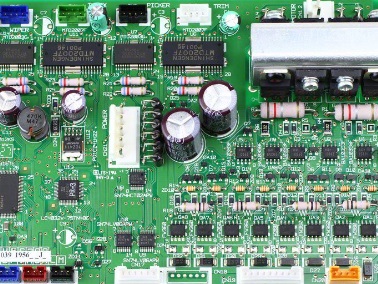A main pcb board is a flat plate that provides mechanical support for electronic components. It uses conductive pads to receive terminals for components and flat surfaces and cables to connect terminals for components.

The function of the main PCB board
1. The boards have two main functions. The first method is to install electronic components at specific locations on the outer layer. Secondly, it provides electrical connections between component terminals. At the same time,the main PCB serves as a platform, and electronic components are carefully installed within it.
2. The main PCB board is the building block for most electronic devices. In addition, the PCB can be single-sided, double-sided, or multi-layer. It is a flat insulating material characterized by copper foil laminated on the substrate. Moreover, this board connects electronic circuits. The board uses electroplated copper conductors. These conductors pass through holes called vias.
3. In addition, the main PCB board can have multiple layers of copper. The complexity of a single board depends on the number of layers and the degree of interconnection between layers. Multi-layer main PCB board provides better Signal integrity and more routing options. However, the manufacturing cost of PCB is very high. Moreover, this is time-consuming.
Double-layer PCBs are very easy to manufacture. This is because both sides are made of copper. However, the multi-layer board incorporates an additional internal copper layer. Compared to a two-layer board, a four-layer circuit board has more routing options.
Materials Used for Main PCB board
The commonly used materials for manufacturing the PCB substrate include substrate, copper, and solder mask.
1) Substrate
The board can use flexible or rigid substrates. This depends on the PCB application. In addition, the rigid master pcb uses polyimide or FR4. However, the flexible main pcb uses high-temperature polyimide film.
2) Copper layer
The copper layer is a coating or foil applied to one or both sides of a PCB. The purpose of the copper layer is to provide electrical signals between components on the circuit board.
3) Solder mask
Resistance welding is another main material used for the main PCB board. This material can protect PCBs. Therefore, its function is PCB skin. Solder resistance film is a protective material made of polymers.
4) Silkscreen
This material is also known as the nomenclature. It is usually laminated on the component side of the main PCB board. In addition, the silk screen layer helps to represent logos, settings, and symbol switches.
The manufacturing process of the main PCB board
1) Developing images of circuits through photographic tools or direct imaging.
2) Remove excess copper from the inner layer. This helps reveal mats and traces.
3) Develop PCB stacking by laminating PCB materials through pressure and heating. In this step, the prepreg is necessary as it helps with the bonding process.
4) Drill holes and install holes through holes and pin holes. These holes help to enhance the placement of components through PTH technology.
5) Apply a solder mask. Solder shielding uses ultraviolet radiation. In addition, apply a solder mask to the entire surface of the board to weld the metal pad.
6) Add surface finish to the board There are various surface finish options for your PCB Ensure you use the appropriate surface finish for your board.
7) Check and test the circuit board for defects or errors. This stage is crucial as it ensures the functionality.
The main PCB board is the core component of electronic devices. Without this PCB, electronic devices cannot function. Therefore,it is very important in the production of electronic products.